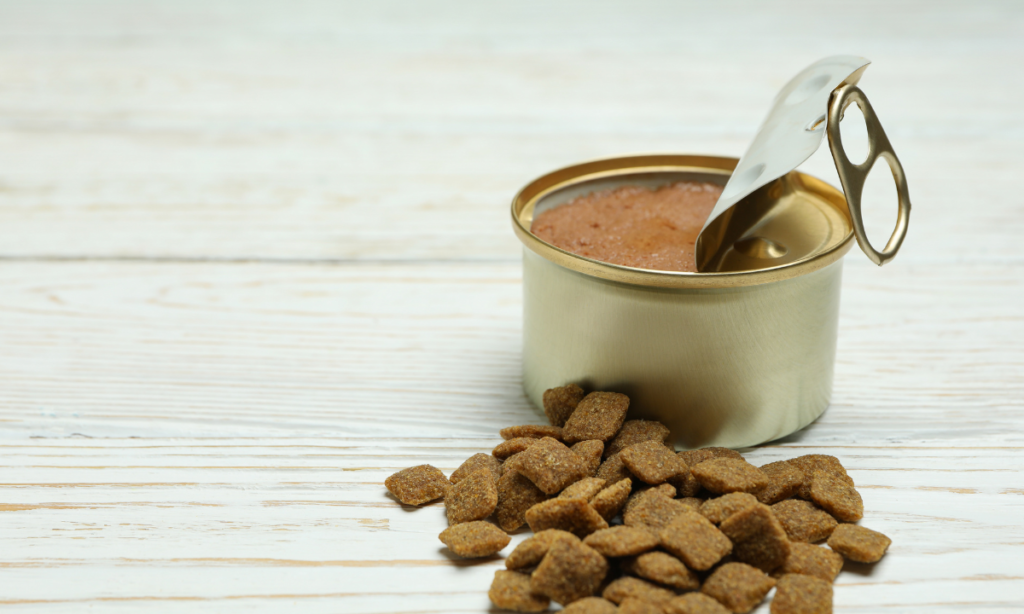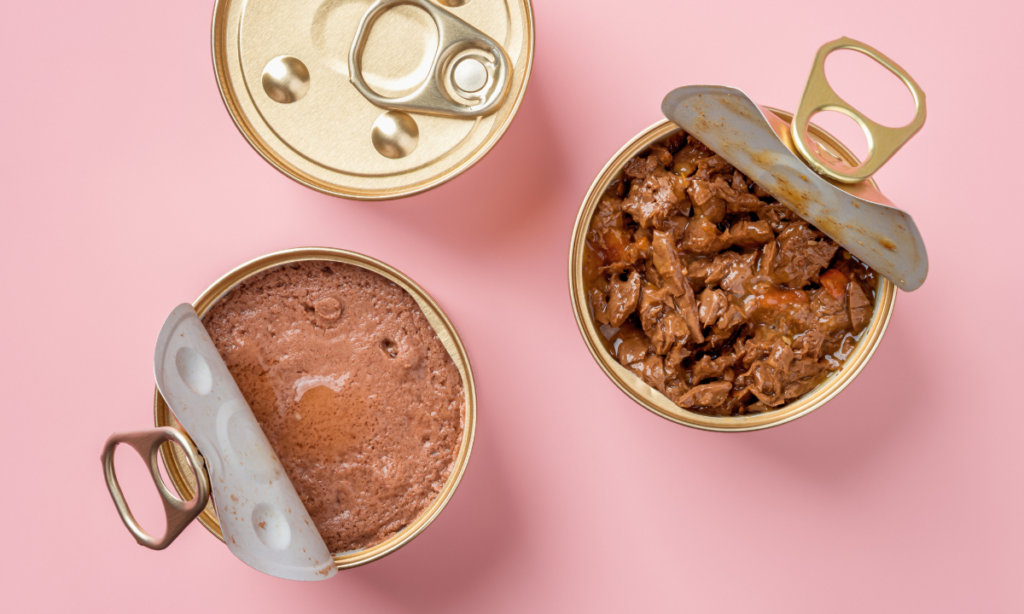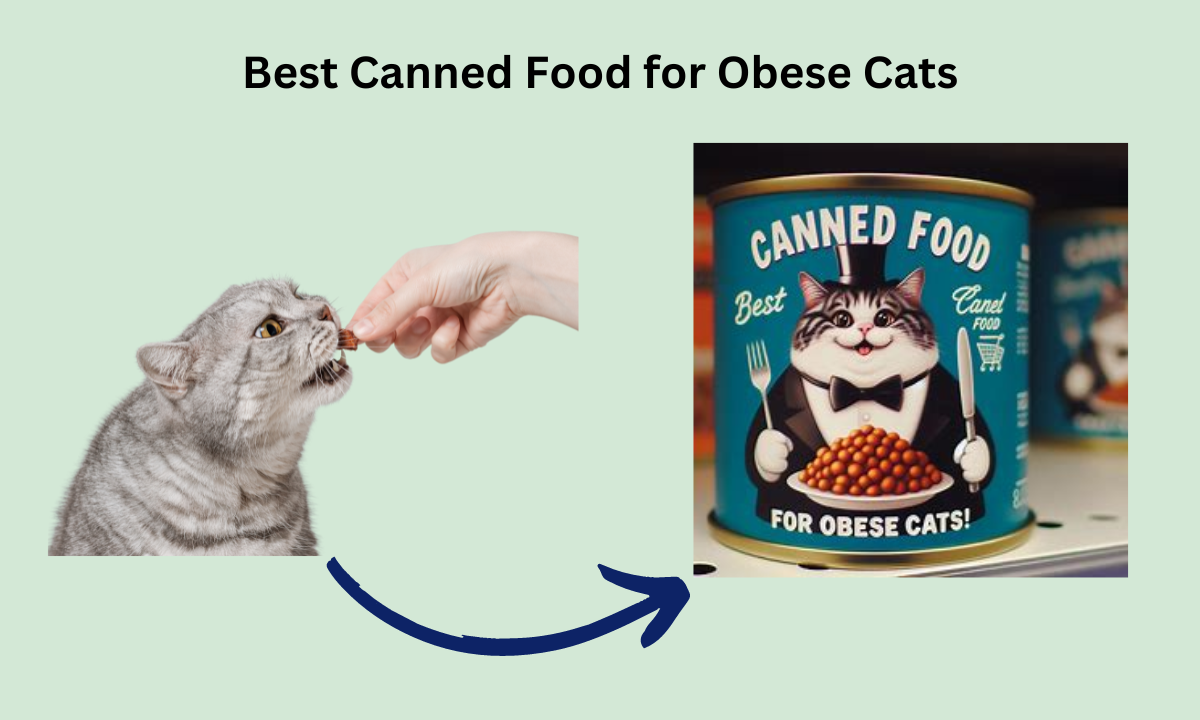Just like humans, cats can become obese without a balanced diet. As caring pet parents, we must ensure our furry friends maintain a healthy weight. We can support our cats ‘ wellness through proper canned food selection and portion control. This guide explores the best canned food for obese cats and options for overweight kitties based on ingredients and nutritional profiles.
Canned Food with Low Calories and Fat
When cats have extra weight, we must choose cans with fewer calories and less fat so they lose weight slowly over time. Food labeled “weight control” or “weight management” is best. Look for less than 70 calories and 3 grams of fat per serving. Canned tuna or chicken in water without sauces or gravy are good options, with only protein to fill them up without extra calories. Protein supports muscles as they lose fat. Always read labels to choose cans as low in calories and fat as possible for furry friends watching their figures.
Canned with Whole Protein Sources

Whole protein sources from meat provide nutrients to support overall health during weight loss. High-quality canned foods list meat or fish as the main ingredient instead of meal, by-products, or cheese. Tuna, chicken, or salmon packed in juice rather than sauces or gravy are easy for overweight kitties to digest. The protein helps them feel full for long periods to avoid extra nibbling and grazing between meals. Whole proteins also support muscle growth as they lose fat through diet and exercise.
Canned with Limited Additives
We must read labels carefully for cats to lose weight and avoid cans filled with additives, preservatives, sugar, or artificial colors and flavors. These provide empty calories without nutrition. The fewer ingredients listed, the better.
The healthiest options are single-ingredient varieties like plain chicken, tuna, or salmon. Complex ingredients or long lists of unpronounceable additives offer little benefit and may disrupt digestive health. A simple diet supports overall wellness on their weight loss journey.
The Right Portion Size
As with humans, portion control is key for cats watching their figures. Read guidelines on cans for serving sizes based on weight, typically 1/4 to 1/2 cans twice daily. Use measuring cups to dole out the right amount carefully.
Avoid letting bowls remain full all day. Spread meals at least 8 hours apart to avoid constant grazing. Snacks, like a few treats or a teaspoon of canned food, should be minimal as a reward for good behavior. With the right food and portions, our feline friends’ figures will achieve a healthier shape in no time.
Canned Foods with Nutrients for Wellness

When cats diet, we must pick cans full of vitamins and minerals to support their overall health. Look for sources of vitamin A for vision and immune function—cans with vitamin B12 aid energy levels and nerve health.
Omega-3 fatty acids from fish are excellent for skin and coat conditions. Nutrient-rich foods make losing weight easier on the body. Preventing nutritional deficiencies keeps weight loss beneficial rather than stressful. Reading labels lets us select cans containing vitamins and minerals in easy-to-digest formats.
Low-Carb Canned Options
Low-carb canned foods allow steady fat reduction without hunger pangs for overweight kitties watching their weight. Simple proteins like fish provide energy from fat and protein instead of carbs. Carbohydrates from fillers like rice, corn, or potato break down into sugar, causing blood sugar spikes and crashes that leave cats unsatisfied.
This may lead to nibbling between meals. Choosing cans made mainly of meat or fish without carb-heavy ingredients prevents excess sugar intake from keeping kitties feeling full for longer on fewer calories overall.
Consult Your Veterinarian
When starting any cat on a diet, chat with your vet to discuss the right plan. They can examine your furry friend and advise appropriate calorie and portion goals based on current weight and activity levels. Vets can also recommend specific commercial canned foods or homemade recipe ideas tailored to your cat’s needs.
Some kitties need supplements during weight loss to ensure proper nutrient intake. Checking in regularly tracks your cat’s progress safely under professional guidance. A vet ensures your loveable kitty healthily loses pounds.
Read Food Labels Carefully
As we learned before, reading labels is key for choosing appropriate cans. Check the guaranteed ingredients, calories, fat, protein, and carbohydrates analysis. Avoid products with wheat, corn, or soy fillers and favor single meat sources instead.
Watch for added sugars, colors, or salt, too. Kitty food filled with extras may hinder weight loss. The fewer recognizable ingredients, the better. Bring cans home and read labels again before buying in bulk to double-check what goes into keeping our furry friends fit and healthy long-term.
Provide Mental Stimulation
Beyond diet, keeping kitties mentally engaged prevents boredom eating. Entertain them with interactive toys requiring pawing or chasing. Puzzle feeders or treat balls slow nibbling. Make mealtimes engaging by hand-feeding kibble or treats as rewards for tricks. Mental activities burn more calories than rest. Daily play sessions with feather wands, laser pointers, or catnip mice instill confidence and preserve lean muscle as weight drops. Enriching leisure leads to healthier, happier pets for longer lives with us.
Monitor Progress and Be Patient
Losing weight takes commitment but benefits our furry loved ones and their future well-being. Weigh kitties regularly, such as monthly vet visits, to track progress. Take photos for comparison over weeks. Note improvements in energy, coat condition, and interest in play that show our dedication improves their quality of life.
Changes may be gradual, so stick to the plan. If weight loss plateaus, have the vet re-evaluate diet or activity. With consistency and care, tubby tabbies will look sleek in no time while staying happy and healthy. Every small success motivates us on this journey together.
Conclusion
We can support our lovable cats’ weight loss goals by choosing lower-calorie, protein-based canned foods with minimal additives and carefully monitoring portions. A balanced diet paired with play is the healthy way to help chubby kitties slim down.
As our furry companions lose pounds healthily over the weeks, they will feel happier and have more energy for fun. With patience and care, our once-plump pets can maintain good wellness and health. Let’s empower our pets to be healthy and happy by properly feeding them the right nutrition.
Frequently Asked Questions (FAQs)
How do I know if my cat is overweight?
It’s easy to see if your furry friend could stand to lose a few pounds. First, feel around their ribs – you should be able to handle them easily but not see them. Also, check from above; their tummy should curve up, not out. Their belly shouldn’t hang between their back legs when they sit. Ask your vet to check their weight and body condition at regular checkups.
When should I switch to weight-loss food?
If your cat looks a little round in the tummy, it’s best to consult your vet before changing their diet. Vets can do health checks and recommend appropriate transitioning. Usually, when a cat is 10-15% over ideal weight, a lower calorie weight loss food supports steady pound trimming. But don’t switch foods abruptly. Introduce new food slowly over two weeks after vet approval.
How much weight should my cat lose each week?
In general, cats should lose about 1-2% of their weight each week for healthy reduction. Heavier cats may safely drop a bit more every seven days. Rapid loss causes hunger and irritability, disrupting the lifestyle changes needed for long-term weight keeping. Patient and gradual is kinder for their body and spirits. Let your vet evaluate ideal goals for your individual feline friend.
What if my cat refuses new diet food?
It’s normal for cats to turn their nose up when something new replaces a regular meal. Be patient, don’t give in, and introduce change slowly. Try warming a small amount of fresh food to release smells. Mix a pinch into their usual meal over two weeks until fully transitioned. Reward with affection or treat when they eat it. After a day or two, they’ll realize this food keeps tummies full, too. Stand firm, and they’ll adapt to slim down for long health with you.
Also Read


